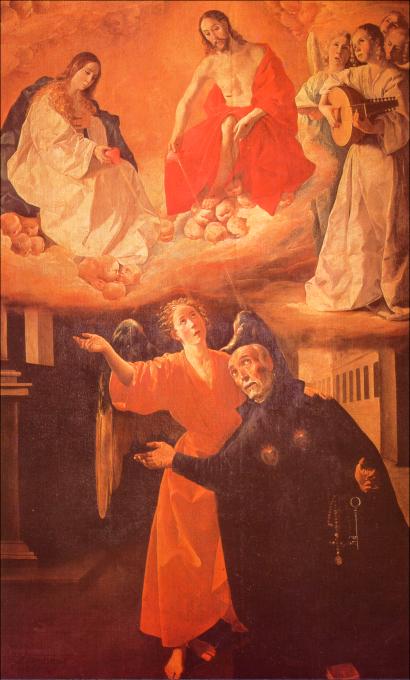
The artist proved a hit in 2009-10 during the National Gallery’s exhibition in London, The Sacred Made Real, where one of Zurbarán’s famous Christ on the Cross paintings took centre stage.

With this exhibition, BOZAR offers an occasion to celebrate Zurbarán 350 years after his death, as well as adding to the master’s wider public appeal. Simple, yet strikingly direct, the Spaniard developed, to quote Rivero, “a unique visual language in which he combined pure naturalism with a poetic modernity”, which is evident from the early paintings, which hint at a Caravaggesque influence marked by the dramatic use of chiaroscuro, to his late, more personal and poetic paintings. Zurbarán’s paintings, albeit a century later, visualise these mid- 16th-century guidelines. Painters of the time necessarily adapted their work and hence responded to the council. They were to be simple, direct, moving and encourage devotion. Images should instruct rather than lead toward false dogma or superstition. Through the decree On the Invocation, Veneration and Relics of Saints and On Sacred Images, the council asserted that images were to provide examples for the faithful to live by. Zurbarán, with an apparently tender – yet at times haunting – brushstroke, easily conveys his personal devotion in scenes from the lives of saints, martyrs and monks, often commissioned by the very characters he depicted in the monasteries and the church.Ĭontextually, an understanding of the Council of Trent (1563) concerning the visual arts brings the viewer closer to Zurbarán’s work.

The result of this spirited approach culminates in an oeuvre that is predominantly made up of work with religious subject matter. A devout Catholic strongly influenced by the Counter-Reformation and the doctrines of the Roman Catholic Church, Zurbarán had the ability to put across a clear, direct and easy message in his paintings. However, the native of Extremadura did possess something remarkable. Aimed at offering a retrospective, about 50 works organised thematically and chronologically adorn the elegant walls of BOZAR and give the visitor the opportunity to rediscover a gifted contemporary of Velázquez and Murillo.Īs curator Ignacio Cano Rivero explains in the ambitious catalogue that accompanies this exhibition, Zurbarán did not enjoy the same artistic success and fame as the court portraitist Velázquez. BOZAR, The Centre for Fine Arts, Brusselsīy JULIE BECKERS This winter, a warm southern breeze sails in as Brussels celebrates the Spanish Baroque painter Francisco de Zurbarán (1598-1664).


 0 kommentar(er)
0 kommentar(er)
